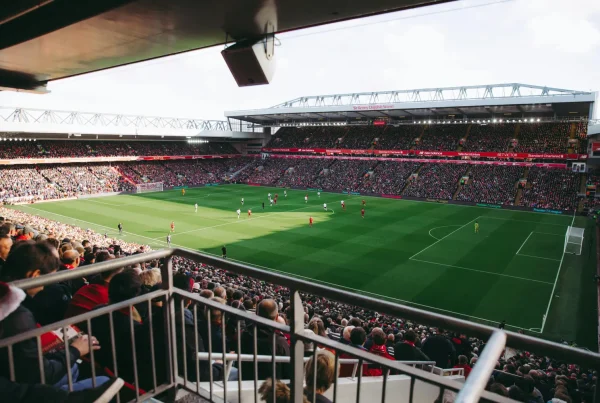What is Pixel Pitch?
Nothing turns heads and captures attention quite like digital signage. Dynamic and vivid LED displays prove superior at content delivery and message dissemination compared to traditional advertising tools such as printed posters, billboards and other types of static signage. But, to get the most out of an LED display, it’s important to understand the technology as much as possible so it can be optimally deployed. One factor that should be given particular consideration is pixel pitch.
When researching digital signage technology for your brand, pixel pitch may be an industry term that you’re not familiar with. Understanding the different aspects of display technologies will ultimately help you make the best decision for your company and space. When it comes to LED displays, finding the pixel pitch that’s right for you is essential to the success of your display.
Pixel pitch describes the density of the pixels (LED clusters) on an LED display and correlates with resolution. Sometimes referred to as pitch or dot pitch, the pixel pitch is the distance in millimeters from the center of a pixel to the center of the adjacent pixel. In simple terms, pixel pitch is the distance from the center of an LED cluster (or pixel) to the center of the next LED cluster/pixel measured in millimeters.
Why is pixel pitch important?
Pixel pitch is a technical specification that is used to differentiate between LED tiles. Each individual LED is a pixel. The pixel pitch number indicates the distance between LEDs in millimeters, as well as the minimum viewing distance in meters. The optimal viewing distance is typically 2-3 times the pixel pitch number in meters. Pixel pitch affects both viewing distance and the visual performance of LED displays.
Pixel pitch is important because it influences the optimal viewing distance for your display. An image achieves finer detail with lower pixel pitch values. This allows the viewer to stand closer to the screen and appreciate a clear image without the distraction of discerning individual pixels. When determining viewing distance and pixel pitch, the rule of thumb is that a smaller pixel pitch allows for a closer viewing distance. Conversely, a higher pixel pitch elongates the minimum viewing distance. So, a 1.2mm screen will have significantly higher resolution and a closer optimal viewing distance than a 16mm.
Pixel Pitch vs. Resolution
Often, when choosing a display, you hear statistics about the resolution — for example “1080p” or “4k” displays. The pixel pitch for your LED is a direct measure of the potential resolution: The lower the pixel pitch, the higher the potential resolution. For most LED applications, 1080p resolution is available using the standard rules of thumb for pixel pitch and distance. If you desire higher resolution, a lower pixel pitch may be in order. But an important consideration is the quality of the image and content that you’re rendering on the LED . For example, a low-quality image will result in poor output , regardless of the pixel pitch you’ve selected.
Is a higher or lower pixel pitch better
The lower the pixel pitch, the more tightly packed together the pixels are (the higher the pixel density). The higher the pixel density, the higher the display resolution (pixel count) is within a given area. So, a lower pixel pitch is better than a higher one. For example, a 1mm (p1) video wall will be 6x the resolution of a 6mm (p6) video wall of the same size since the pixels in a 1mm panel are 6x closer together than a 6mm panel. Here is the concept illustrated on a 16:9 ratio 16’ x 9’ LED video wall:
![]()
Indoor Small Pixel Pitch
Typically, the ideal pixel pitch for indoor applications is done using a 16:9 aspect ratio. Many find this to be ideal because this is one of the easiest and most standard outputs for content creators. Yaham’s Super Slim Series (SS Series) is known for its high definition, ultra-thin frame. The SS is flush mounted with a 29.5mm thickness edge, making it sleek and ultra-thin.
Pixel Pitch Key Points
- Pixel pitch refers to the density of pixels
- A smaller pixel pitch indicates higher pixel density and higher resolution
- Viewing distance is important because it influences pixel pitch.
Choosing the right LED pixel pitch doesn’t have to be a challenge.
Please contact us to see how Yaham can help you bring your vision to light.



